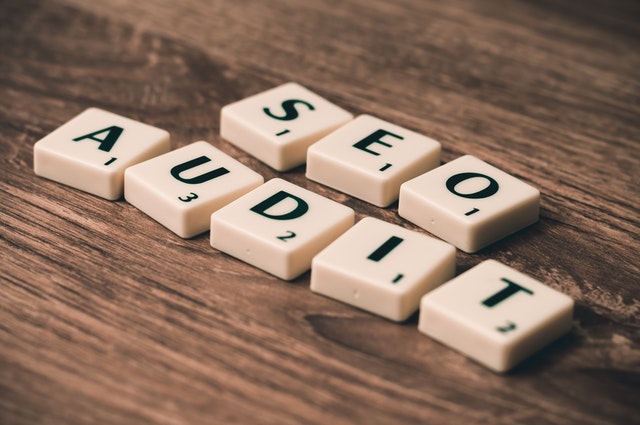The first step to work on a positioning strategy for a web project is to perform an SEO audit. But how to perform an SEO audit? Where to start?
The following article will teach you everything you need to know to perform an SEO audit for your website so we recommend that you make yourself comfortable and join us until the end of the post.
Auditing any web project is an essential task for any SEO analyst. Due to this analysis, you will identify the main errors and improvements for the website. In addition, you will be able to improve the visibility of the project, improving the organic positioning.
Properly performing an SEO audit could be your key to success, but where do you start? Although many specialists have a preferred method, there is no single methodology for performing an SEO audit.
Even so, let’s take a walk in the following article where you will know in detail all the aspects that we consider important to improve the visibility of your project.
This is the ideal time to take a sip of your coffee or drink and focus because the fun is coming.
Get more traffic to your website with our professional FREE SEO AUDIT!
What is an SEO Audit?
To understand in a very easy way what an SEO audit is, let’s think about when we go to visit the doctor after a long period of not going. The first thing the doctor will ask you for is a blood test or x-ray, depending on the reason for the doctor’s visit.
This would be the audit phase. Then, depending on the results, the doctor will prescribe a treatment.
This is how an SEO audit works. It consists of a detailed analysis of the current state of a web project to detect the main errors, opportunities, and difficulties.
Once the SEO audit has been carried out and the main errors have been detected, relevant solutions are proposed. Subsequently, a work strategy is created to attack the different tasks to be carried out in order to improve the website.
As a tip, we advise you to prioritize the tasks. Attack the most critical and high-impact tasks first and leave the less relevant ones last.

An SEO audit consists of a detailed analysis of the current state of a web project to detect the main errors, opportunities
Advantages of this detailed analysis
After creating a website, it is necessary to constantly feed it with new content. By
posting new material on a regular basis, it is very easy to lose track of your project’s
performance, so performing an SEO audit will help you to better understand your
website.
Also, remember that Google’s algorithm is constantly changing and user behavior
can vary from one day to the next. Therefore, performing a periodic SEO audit will
help you improve your website’s performance.
Through an SEO audit you will be able to:
- Adapting to changes in search engine algorithms
- Optimize indexing and positioning of your pages
- Increase organic traffic
- Improve the overall health of your website
- Design a continuous improvement strategy
What is analyzed during an SEO audit?
We already know what an SEO audit is, what it is for and how it can help our website.
Now we are going to detail the factors that will be analyzed and we will divide them
into two blocks.
- On-Page Audit: Technical SEO aspects (indexability, crawlability, WPO, sitemap,
etc.) and contents (meta tags, headings, web architecture, keywords, etc.). - Off-page audit: All aspects that depend on external sites are analyzed (inbound links,
authority, link profile, etc.).
Our Free SEO Audit Tool will guide you on how to optimize your page and fix your website’s SEO problems
How to perform it?
To rate and rank websites, Google takes into account more than 200 factors, but there are some more essential ones that we should pay more attention to.
Let’s get to work!
Indexing and crawling
Without crawling there is no indexing and without indexing, you will not be able to rank. Therefore, the first step of the SEO audit is to analyze the indexing and crawling of our site.
Even if you want all your posts to be top in Google, it is important to consider indexing only relevant content. The one that truly brings value to users searching on Google.
To identify which URLs are indexed, enter the following command “site:webname.com” in Google.

The first step of the SEO audit is to analyze the indexing and crawling of our site.
In order for Google bots to crawl the different pages of our website correctly, it is
important to optimize something called «Crawl Budget«, which is the time that Google
allocates to our website.
The higher the frequency of crawling by Google, the more URLs it will be able to
crawl. To analyze this data, open our Search Console, go to the Tools and old reports
section and look for Crawl statistics.
As you optimize the Crawl Budget, the number of crawled pages should gradually
increase.
Robot.txt and Sitemaps.xml files
Once you have analyzed the crawling and indexing of your website, you should
examine the «robots.txt» file to check that certain URLs are not blocked. Verifying the
correct configuration of the Robots.txt file will help you have more control over what
Google is crawling, indexing and positioning in the SERPs.
Another factor to study is your sitemap, a file containing an organized list of your
website’s URLs. These files help Google to know the internal structure of your page,
facilitating crawling.

Loading speed
How long does it take for your website to load? This is important for both Google and the user. The shorter the loading time of your site, the better the user experience and the higher the crawl frequency for Google.
To measure the current speed of your website, you can resort to free tools such as GTmetrix and Webpagetest or Google’s own tool called PageSpeed Insights.
Error Analysis
Everyone wants to minimize mistakes to achieve success. So does Google. The pages of your website should return a 200 code from the server. What does this mean? That everything is fine and under control, however, there are different errors that could be a headache.
- Error-301: Indicates when there is a redirection from one page to another.
- Error-404: Indicates when a page does not exist.
- Error-500: Indicates that the server was unable to process the page.
Content Quality
In the digital world, there is a not-so-secret magic formula: content is king. If you
want to stand out, your content must be unique, original, and meet the needs and
expectations of your users.
The first step, before sitting down in front of your computer to write, is to do some
keyword research. In this search, you will discover how many times a particular term
is searched for. In addition, you will be able to identify new opportunities.
Meta Tags
All information that Google displays to users in its search engine is meta tags. So,
if you want to stand out in Google, meta tags are important.
For Meta Titles, we recommend:
- Use a unique, original title and should not be repeated on other pages.
- Always include the keyword
- Must not exceed 65 characters
For Meta Descriptions, we recommend:
- Like the title, it should not be repeated on other pages.
- Always include the keyword
- Must include a call to action to attract the user’s attention.
- Must not exceed 155 characters
Images
For Google not only is the text important, but also the images. Through something called «ATL tag» we can assign a brief description according to the image and using keywords.
Optimizing the loading speed of images is also important. To adapt the size and resolution of the image to your page.
Internal links
A correct internal linking gives more strength to those URLs designed to boost your page organically. It also helps to reduce the bounce rate.
So far we have seen in broad strokes what an On-Page SEO audit analyzes. Now, it’s time to analyze your Off-Page SEO.
Off-Page SEO
To acquire a better authority in the eyes of Google, we must have «good friends». The links we receive from other websites, called backlinks, are signs of trust, relevance, and popularity.

In order for these backlinks to properly boost our portal, they must be of quality and
not be considered spam. In addition, external links should be added in a natural way,
always with valuable and quality content around them.
Implementing a link-building strategy should be done cautiously and gradually.
Otherwise, Google may become suspicious of you.
Domain authority
If we manage to have good growth in terms of external links and our link profile is
healthy enough, we will gradually increase the authority of our domain.
Our team of dedicated search marketing specialists allows us to offer you the best SEO Website Audit
Tools to perform an SEO audit
If you have come this far, you are very close to boosting your website. To help you achieve this, we share with you the main and best tools for you to perform your SEO audit.
Search Console: Free Google tool where you will get a basic analysis of your website.
Google Analytics: Detects, measures and analyzes the SEO of your website.
Semrush: Powerful tool that will help you keep track of your marketing and boost the visibility of your website.
Screaming Frog: Monitor your website with this crawling tool. You can analyze up to 500 URLs for free.
Ahrefs: Take care of your website from toxic external links and check your competitors’ strategy.
Safecont: Analyze the quality of your content and aspects of your SEO architecture with this tool.

Good SEO work only
gets better over time
Jill Whalen
Is an SEO audit worthwhile?
If you want to have your website optimized to rank on Google, an SEO Audit should be an almost mandatory action. However, it is a task that must be performed periodically to have constant control of the evolution of the project.
If you want to boost your website, contact us!



